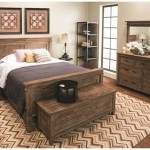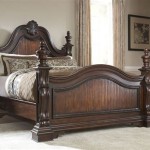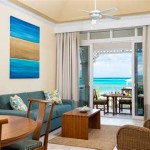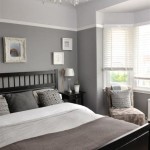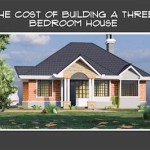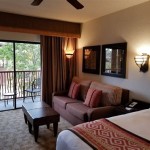Best Portable Fan For Bedroom: A Comprehensive Guide
Maintaining a comfortable bedroom environment is essential for restful sleep and overall well-being. While central air conditioning provides consistent cooling, personal preferences, energy efficiency concerns, and the lack of centralized systems in some dwellings often lead individuals to seek alternative cooling solutions. Portable fans emerge as a cost-effective and versatile option for achieving personalized comfort within the bedroom. Selecting the most suitable portable fan, however, requires careful consideration of various factors, including fan type, noise level, airflow capacity, features, and energy consumption.
This article provides a detailed overview of the best portable fans for bedroom use, highlighting key features and considerations to aid in making an informed decision. The focus will remain on objective information and practical application, avoiding subjective opinions and any language pertaining to artificial intelligence or personal narratives.
Types of Portable Fans
The market offers a diverse array of portable fans, each with its own set of advantages and disadvantages. Understanding the different types available is crucial in selecting a fan that best addresses individual needs and preferences.
Table Fans: Table fans are a common and affordable option. These compact fans are designed to be placed on a table, desk, or nightstand. They typically feature adjustable tilt and oscillation, allowing for directional airflow. Table fans are generally quieter than some other types of portable fans, making them suitable for bedroom use. Their smaller size, however, may limit their airflow capacity, making them better suited for smaller bedrooms or personal cooling.
Tower Fans: Tower fans are characterized by their tall, slim design, which makes them ideal for rooms with limited floor space. They operate by drawing air through a vertical intake and expelling it through a series of oscillating vents. Tower fans provide a wider coverage area than table fans, making them suitable for larger bedrooms. Many tower fans come equipped with features such as multiple speed settings, timers, and remote controls. Noise levels can vary among different models, so it is important to consider this factor when making a selection. The taller design also allows for air circulation closer to bed height.
Box Fans: Box fans are a budget-friendly and powerful option for circulating air within a room. These fans feature a square or rectangular shape and typically have three or more speed settings. While box fans are effective at moving large volumes of air, they can be noisier than other types of portable fans. Their basic design lacks advanced features such as oscillation or timers. The airflow from box fans is generally more directional, which may not be ideal for all individuals.
Pedestal Fans: Pedestal fans are similar to table fans but are mounted on an adjustable stand. This allows for greater flexibility in directing airflow and makes them suitable for larger bedrooms. Pedestal fans typically feature adjustable height, tilt, and oscillation. Similar to table fans, noise levels are usually relatively low, and many models include variable speed settings. The adjustable height allows for directing airflow across a bed or seating area more effectively than a table fan alone.
Bladeless Fans: Bladeless fans, also known as air multipliers, utilize a different technology to generate airflow. They draw air from the base of the unit and amplify it through a hollow ring, expelling a smooth, consistent stream of air. Bladeless fans are generally quieter than traditional bladed fans and are considered safer due to the absence of exposed blades. They often feature advanced features such as remote controls, timers, and air purification capabilities. However, they are typically more expensive than other types of portable fans.
Key Features to Consider
Beyond the type of fan, several key features contribute to the overall suitability of a portable fan for bedroom use. Evaluating these features will help ensure that the selected fan meets specific needs and preferences.
Noise Level: Noise is a critical consideration for bedroom use, as a noisy fan can disrupt sleep. Look for fans that are explicitly marketed as "quiet operation" or specify a decibel (dB) rating. Fans with noise levels below 50 dB are generally considered acceptable for bedroom use. Some fans offer a "sleep mode" that automatically reduces fan speed and noise level during the night, or even uses different frequency of the rotating engine. Independent testing of noise levels is often helpful to verify manufacturer claims.
Airflow Capacity (CFM): Airflow capacity, measured in cubic feet per minute (CFM), indicates the volume of air that the fan can move. A higher CFM rating generally translates to more powerful cooling. Consider the size of the bedroom when determining the appropriate CFM rating. Smaller bedrooms may only require a CFM of 500 or less, while larger bedrooms may benefit from a fan with a CFM of 1000 or more. Also consider the fan's throw - how far the air can be felt from the fan itself. Higher throw makes a fan more enjoyable as ambient air is being moved throughout the room.
Speed Settings: Multiple speed settings allow for customization of airflow and noise level. A fan with a wide range of speed settings provides greater flexibility in adjusting the cooling to suit individual preferences. Lower speed settings are ideal for nighttime use, while higher speed settings can be used for faster cooling during the day. The inclusion of a variable speed knob, versus only a low, medium, and high setting will allow for even finer granular control over airflow. This may come at a higher energy cost.
Oscillation: Oscillation refers to the fan's ability to rotate back and forth, distributing airflow across a wider area. Oscillation is particularly useful for larger bedrooms or for individuals who prefer a more diffused cooling effect. Some fans offer adjustable oscillation angles, allowing for customized coverage. Check the degrees of possible rotation available for a given model, and if it can be adjusted.
Timer Function: A timer function allows the fan to be automatically turned off after a set period of time. This feature is convenient for conserving energy and ensuring that the fan does not run continuously throughout the night. Some fans offer programmable timers with multiple settings. This is extremely useful for falling asleep at a desired temperature which wanes off over time without requiring manual action from the user.
Remote Control: A remote control allows for convenient operation of the fan from across the room. This feature is particularly useful for adjusting fan settings from bed without having to get up. Remote controls typically allow for adjusting speed settings, oscillation, and timer functions.
Energy Efficiency: Consider the fan's energy consumption, as a less efficient fan can lead to higher electricity bills. Look for fans that are Energy Star certified, indicating that they meet certain energy efficiency standards. Many new fan models also utilize DC motors, which provide greater efficiency than traditional AC motors. Check the product specifications for wattage information, and compare with other models.
Filter/Air Purifier: Some fans now include air filtration capabilities. High-Efficiency Particulate Air (HEPA) filters and activated carbon filters are common in portable fans with air purification features. HEPA filters remove dust, pollen, and other airborne particles, while activated carbon filters remove odors and smoke. These features can be particularly beneficial for individuals with allergies or asthma.
Materials and Construction
The materials and construction of a portable fan play a significant role in its durability, performance, and overall value. Considering these aspects can contribute to a longer lifespan and a more satisfactory ownership experience.
Motor Type: The motor is the heart of any fan, and its design and construction significantly impact performance and lifespan. As previously mentioned, DC motors are generally more energy-efficient and quieter than AC motors. Brushless motors offer increased longevity and reliability compared to brushed motors. Reviewing the motor specifications and understanding the motor's construction can offer insights into the fan's overall quality.
Blade Design: The shape, size, and material of the fan blades influence airflow efficiency and noise levels. Aerodynamically designed blades can generate a more efficient and quieter airflow. The number of blades also affects airflow; more blades generally lead to a smoother, more consistent airflow. Consider the material used for the blades. Plastic blades are common, but metal blades can be more durable. Metal blades can also, in some cases, resonate and create a higher noise level depending on the design.
Housing Material: The housing material protects the fan's internal components and contributes to its overall aesthetic appeal. Plastic housings are lightweight and durable, while metal housings offer increased sturdiness. The quality of the plastic or metal used in the housing will impact its resistance to impacts and wear. Look for fans constructed with high-quality materials to ensure long-term durability.
Stability and Base Design: The base of the fan should provide sufficient stability to prevent it from tipping over, especially when oscillating. Weighted bases or wide bases are generally more stable. The design of the base should also prevent it from scratching or damaging the floor. Evaluate the sturdiness of the base and ensure that it is adequately sized to support the fan's weight and prevent accidental tipping.
Grille Design and Safety: The grille protects the fan blades and prevents accidental contact. The grille design should allow for adequate airflow while ensuring safety. Look for grilles with narrow openings that prevent fingers or other objects from coming into contact with the blades. The material and construction of the grille should also be durable and resistant to damage.
By carefully evaluating the type of fan, key features, and materials and construction, individuals can make an informed decision and select the best portable fan for their bedroom, ensuring a comfortable and restful sleep environment. Careful comparison shopping and reading verified customer reviews is highly recommended before making a final purchase.

The 5 Best Fans Of 2025 Reviews By Wirecutter

The 5 Best Fans Of 2025 Reviews By Wirecutter

The 4 Best Battery Powered Fans Of 2025 Reviews By Wirecutter

The 5 Best Fans Of 2025 Reviews By Wirecutter

The 4 Best Battery Powered Fans Of 2025 Reviews By Wirecutter

The 5 Best Fans Of 2025 Reviews By Wirecutter

The 4 Best Battery Powered Fans Of 2025 Reviews By Wirecutter

9 Best Fans Of 2025 Tested Reviewed

8 Best Tower Fans 2025 Reviewed Hgtv

The 4 Best Battery Powered Fans Of 2025 Reviews By Wirecutter

